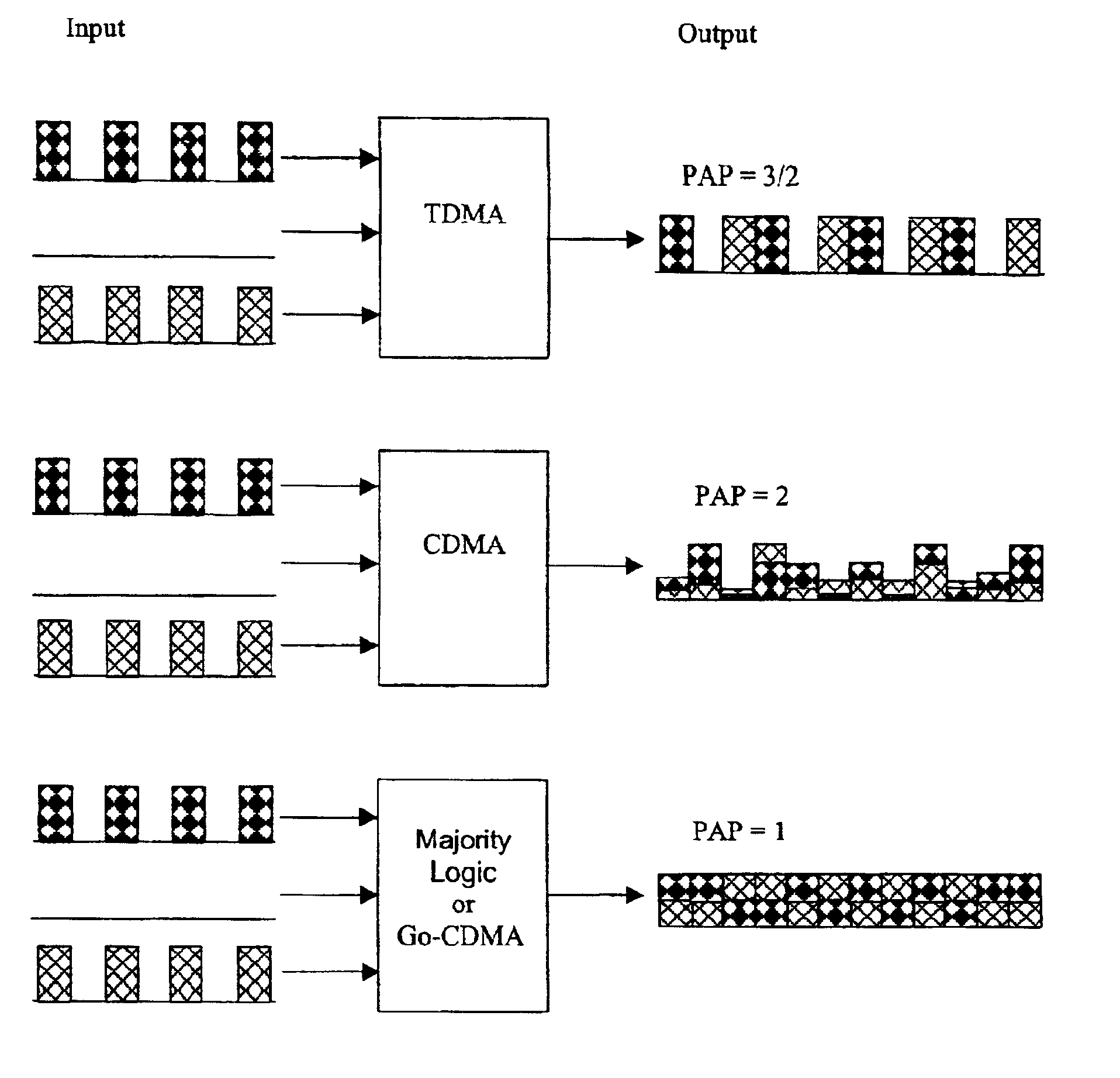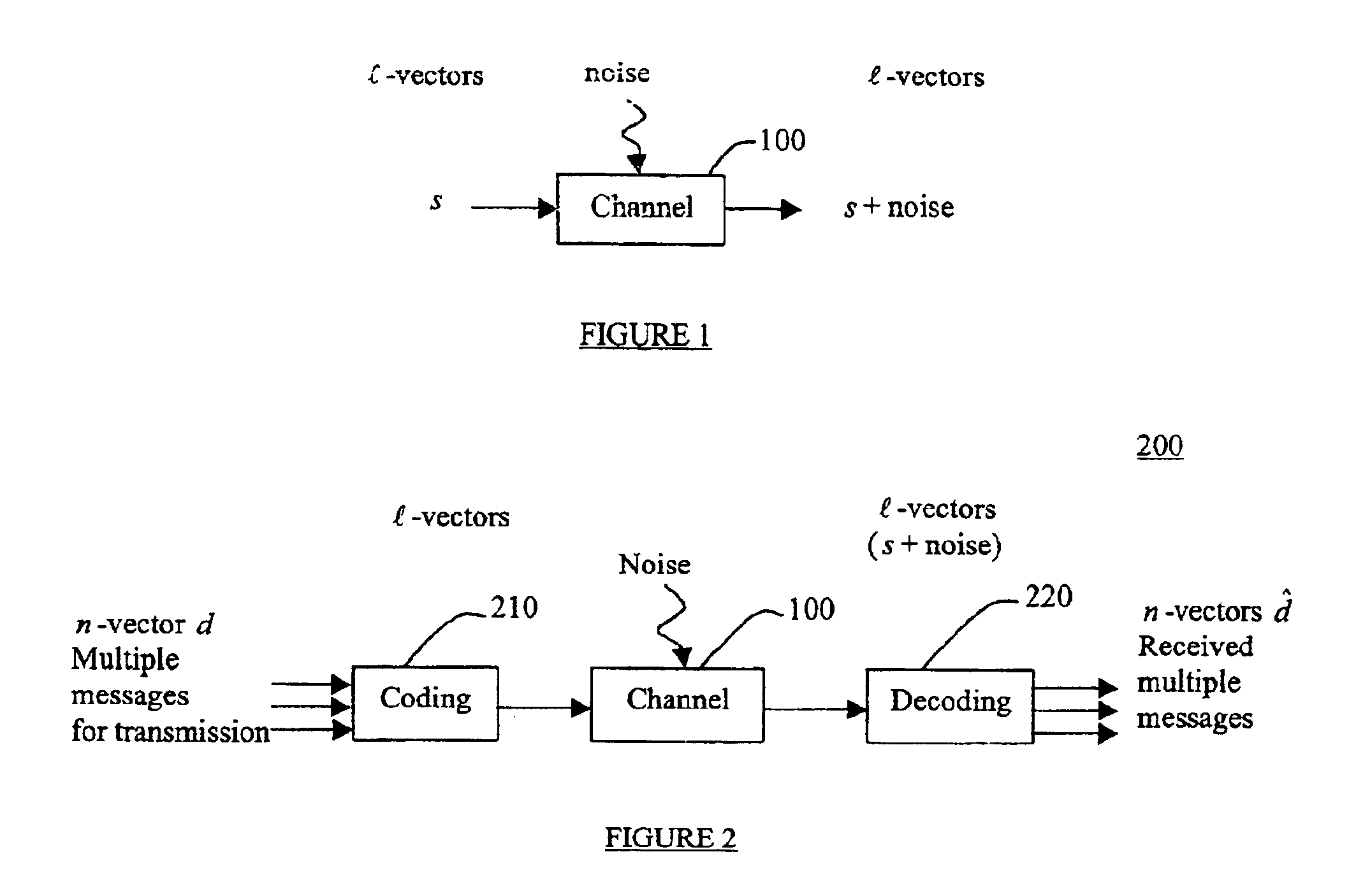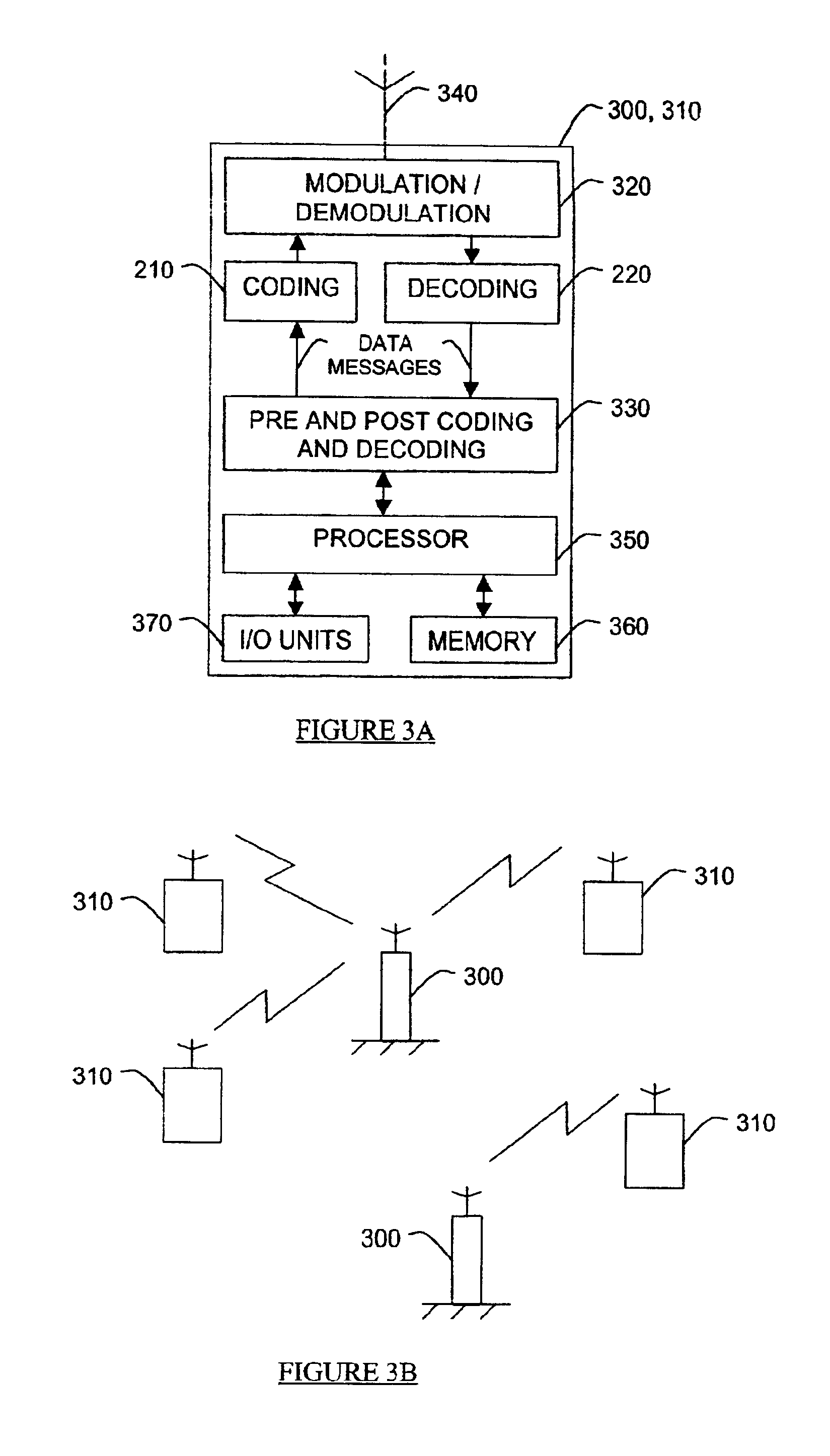Method and apparatus for non-linear code-division multiple access technology
- Summary
- Abstract
- Description
- Claims
- Application Information
AI Technical Summary
Benefits of technology
Problems solved by technology
Method used
Image
Examples
Embodiment Construction
[0038]The performance of code division multiple access (CDMA) technology is enhanced through the use of a new class of non-linear block codes during CDMA signal coding (and decoding). This class of non-linear block codes is termed Go-CDMA codes and is defined in terms of its mathematical properties in the Go-CDMA Technology Overview and Go-CDMA Matrices, Coding, Decoding and Preferred Embodiments sections below. Prior to describing Go-CDMA coding and decoding according to the present invention, an overview of pertinent communications technologies is presented including an overview of those technologies in which Go-CDMA coding and decoding may be implemented.
I. Overview of Relevant Communication Technologies and Coding Schemes
[0039]Current technologies for single cell, or multiple cell, multi-user communication systems include CDMA and time-division-multiple-access (TDMA). These technologies are widely used for mobile communication, with TDMA being the basis of the GSM mobile telepho...
PUM
 Login to View More
Login to View More Abstract
Description
Claims
Application Information
 Login to View More
Login to View More - R&D
- Intellectual Property
- Life Sciences
- Materials
- Tech Scout
- Unparalleled Data Quality
- Higher Quality Content
- 60% Fewer Hallucinations
Browse by: Latest US Patents, China's latest patents, Technical Efficacy Thesaurus, Application Domain, Technology Topic, Popular Technical Reports.
© 2025 PatSnap. All rights reserved.Legal|Privacy policy|Modern Slavery Act Transparency Statement|Sitemap|About US| Contact US: help@patsnap.com



